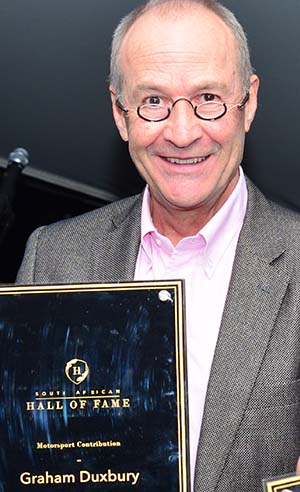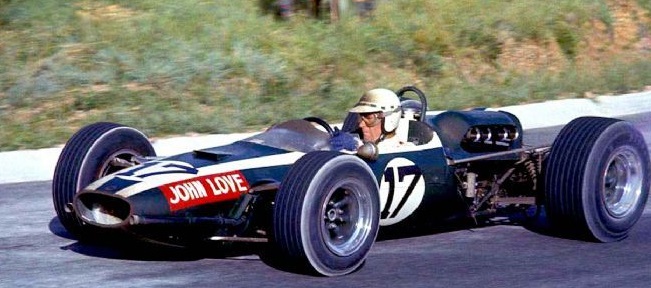Red Bull’s failure to find a Formula One engine supplier for 2022 (the only option left being to acquire Honda’s engine programme) highlights a long-standing problem facing non-works teams since the dawn of the F1 era: They have had to rely on outside engine suppliers.
 By Graham Duxbury
By Graham Duxbury
Back in the 1950s, races were dominated by the big manufacturers, Alfa Romeo, Ferrari, Maserati and Mercedes-Benz. These giants designed and manufactured their own engines and fitted them to their own chassis in purpose-built factories.
The rise of smaller, independent British teams – who were later disparagingly referred to as garagista assembliatore by Enzo Ferrari – underlined the need for third-party engine suppliers to meet their growing needs.
In 1958 the Cooper team was keen to build a F1 car, having dominated the smaller F3 class in Britain. Without the resources of many other teams, John Cooper looked for ways in which his cars could be competitive with the front-engined behemoths from Ferrari and Maserati which were dominant at the time.
While Enzo Ferrari would place all his emphasis on the engine, of necessity Cooper saw the engine as low on the priority list. He decided to make up any performance deficit through a revolutionary (at the time) light-weight, rear-engined chassis design offering handling advantages.
For Cooper there was only one realistic engine option and it came from an unlikely source. It was from a British company that built engines to power water pumps for portable fire-fighting equipment.
The Coventry Climax Feather Weight (FW) engine was designed in the yearly 1950s by Walter Hassan and Harry Mundy to meet a British Ministry of Defence requirement.
The FW’s specification sheet listed it as a 1020cc in-line four-cylinder unit featuring an aluminium block. Having exceeded the Ministry’s expectations for “horsepower-per-pound”, it quickly attracted the attention of the motor racing fraternity. Soon a Feather Weight version for automobiles (the FWA) appeared.
With its capacity increased to 1097cc, the FWA became a popular racing powerplant. It set the stage for the development of a number of world-class racing engines from Coventry Climax, beginning with the FWB, an enlarged (1460cc) engine targeted at the then 1500cc F2 class.
For 1956, Coventry Climax produced the FPF (Fire Pump Four) engine. Similar in concept (but not design) to the FW, it had both industrial and competition applications. A 1,5-litre Mark I version appeared, followed by a 2-litre variant.
This engine was fitted to Rob Walker’s F1 Cooper and driven to victory by Stirling Moss in the 1958 Argentinian Grand Prix. It was the first win for a rear-engined F1 car. Moss led home more powerful 2,5-litre Ferraris and Maseratis in what was described as one of the “unlikeliest of victories”.
The FPF was then enlarged to 2,5-litres and used by Jack Brabham and the Cooper team to win back-to-back F1 World Championship titles in 1959 and ’60.
When the new 1,5-litre F1 rules were mandated for 1961, Coventry Climax produced the FPF Mark II. Not a development of the earlier FWB engine, it used the new 2,5-litre block and cylinder heads with a different crankshaft and cylinder liners to achieve the reduced capacity.
It was a stop-gap engine, as Coventry Climax was working on its most ambitious project to-date, the FWMV (Feather Weight Marine Vee) which despite its name was a purpose-built, eminently successful F1 V8 engine which won World Championships for Jim Clark and Lotus in 1963 and 1965.
In 1964 Coventry Climax decided to build a 1,5-litre flat-16 engine for the 1965 season, the final of the 1,5-litre formula. Unfortunately, the FWMW engine never produced any more power than the championship-winning four-valve version of the FWMV V8.
And, despite Lotus and Brabham having built cars to accept the 16-cylinder engine, Harry Munday pulled the plug on development and at the same time ended the company’s active racing involvement.
Significantly, John Love’s second place in the 1967 SA GP at Kyalami in his Cooper Climax (pictured) marks the last podium finish for the 2,7-litre FPF engine in F1.
Had the FPF and FWMV not been available to Cooper, Lotus and Brabham, it is doubtful they would have been able to compete as successfully as they did in the 1950s and 1960s.

Photocredit: motorsportmedia.co.za
